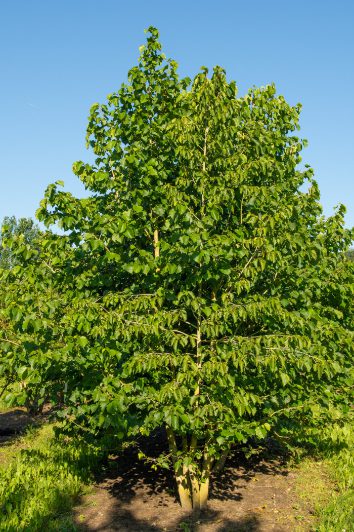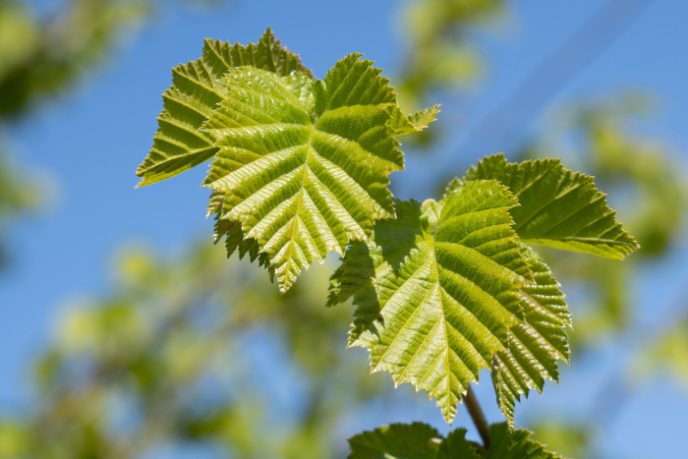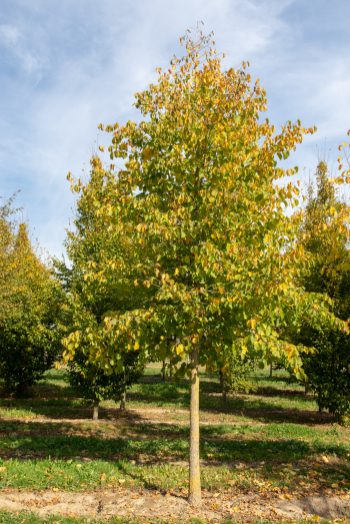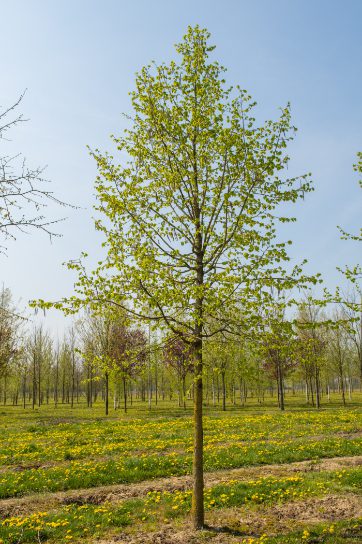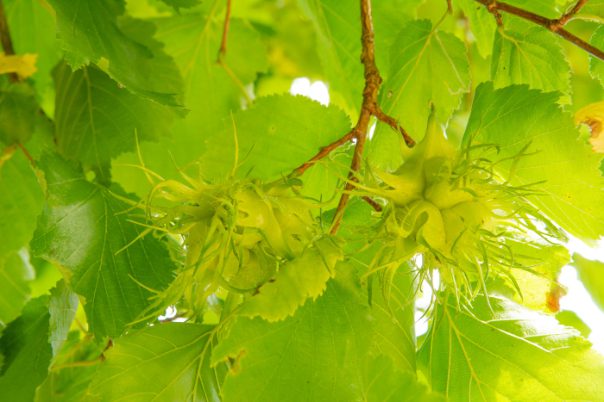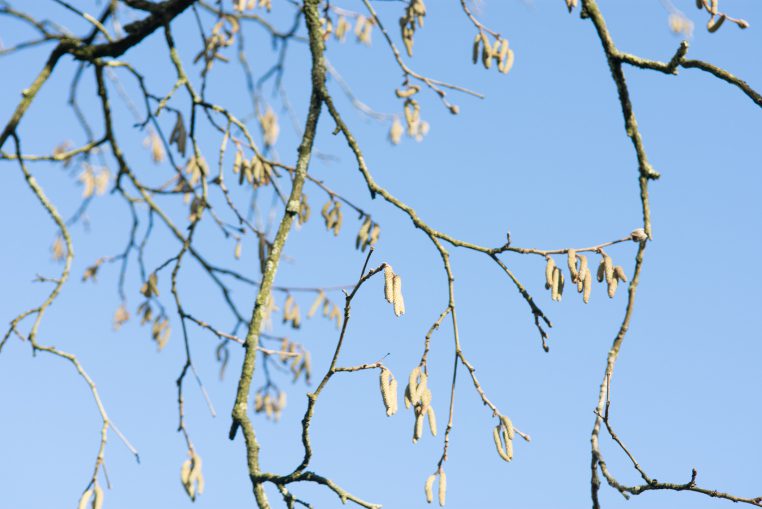Corylus colurna | Turkish Hazel
The Corylus colurna is a large, specimen tree native to south east Europe and south west Asia. It has a distinctively rough, corky bark on the trunk, branches and throughout the canopy. The leaves are mid-green and heart-shaped with serrated edges and soft hairs on both sides, and they turn golden-yellow before falling in autumn. Before leaves appear in spring long, yellow, male catkins hang down from corky branches. The inconspicuous reddish, female flower produces clusters of edible Turkish nuts surrounded by bristly husks in autumn. It has a dense, uniform canopy when young that broadens with age creating a symmetrical pyramidal shape, perfect for avenues. The Corylus colurna is a popular alternative to the Lime tree for avenues because it is relatively resistant to pests and diseases, and doesn't have aphid drip. This is a tough tree that thrives in most soil types, including chalk and clay. It is a deep-rooting tree that will withstand hard surfaces without lifting paths making it ideal for street planting. This tree is tolerant of drought and water logging. The Corylus colurna is a very interesting tree suitable for a wide range of planting schemes.

